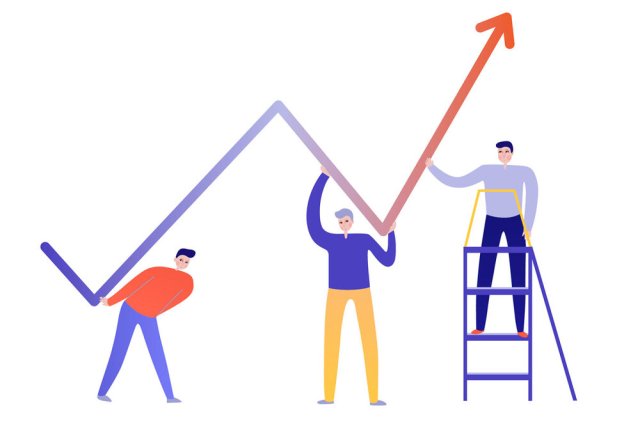Miscommunication is costing the construction industry. According to the Project Management Institute’s ‘Pulse of the Profession,’ poor communication accounts for more than 50% of the money at risk on any given project. The report indicates that for every $1 billion spent on a project, $75 million is at risk due to ineffective communication.
Table of Contents
Cracking Down on Inefficient Collaborative Practices
The report also indicates that high-performing organizations that complete at least 80% of their projects on time and on budget have formal communication plans for double the amount of projects as lower-performing organizations. Those lower-performing organizations complete less than 60% of their projects on time and on budget. According to the Strategic Initiatives Study done by FD/Forbes, 92% of CEOs indicated that communication is critical for achieving success in regard to their organizational strategy.
Construction project requirements are constantly shifting. For general contractors operating on a project-by-project basis, it’s not uncommon to assemble a different project team for each project. When a project is able to uncover a better method of working that could benefit the organization, often when the project finishes and teams will go their separate ways for new project assignments, those new methods are often lost and the knowledge gained isn’t passed on.
Improving communication and collaboration within your organization can lead to increased productivity, reduce the time spent on non-productive work, and enhance the overall performance of your workforce. It is critical to create a model for collaboration and communication that not only works for your organization but is also approachable for your team. In this blog post, we’re going to explore some of the technology that can enhance collaboration within your organization by providing platforms that help to keep your team updated on things like employee and project progress, problems that have surfaced, and potential new methods or solutions for dealing with those problems.
Looking to improve communications? Check out these tips.
3 tools to improve construction collaboration
1. Resource management and workforce planning software
Maintaining workforce and project data often falls on the shoulders of a single individual within each construction company. However, resource management is often one of the few aspects of construction that touches nearly every department within an organization. Human resources, project management, the executive team, and even marketing and sales are all impacted by your workforce strategy and availability. Resource management and workforce planning tools, like Bridgit Bench, allow for controlled access to your project and people data. This helps to not only improve the communication surrounding your workforce allocations, project requirements, and overall resource strategy but also allows for improved collaborative efforts that can help to reduce the workforce planning pressure felt by your operations team.
Some of the other benefits of collaborative workforce planning include:
Uncovering new methods of problem-solving
Keeping your team in the know when it comes to new projects, allocation of resources, utilization rates and potential project changes can help to stimulate new conversations about how challenges can be faced.
Skills development
Inviting your team to collaborate in the workforce planning process gives them the opportunity to observe the decision-making process. This allows them to learn new skills about how your organization uses data to create an efficient workforce plan.
More productive workforce planning meetings
Increased transparency results in proactive information sharing during meetings, and less time updating your team.
Improved company culture
Inviting your team to contribute to your workforce planning shows that you value their unique expertise and input, building a positive work environment that people want to be a part of.
Breaking down silos in your organization
As mentioned earlier, workforce planning and strategy affect multiple departments. Improving your collaborative efforts in this area allows different departments to see how each other connects to your project pipeline and workforce strategy.
Better align all project stakeholders
Improving the collaborative efforts surrounding your resource management helps align your team on the decisions being made regarding your workforce and most importantly, why those decisions are being made.
Worried about allowing your team access to your data? No problem. Bridgit Bench supports custom permission groups that allow you to control exactly who has access to view specific data, and who has access to make updates. Read this guide to learn more about construction resource management.
Think your workforce planning meetings could be more productive?
Download our ebook to learn how to run efficient, effective workforce planning meetings with your team.
2. PROPERLY LEVERAGING THE G-SUITE
There’s no denying the suite of tools that Google provides. From Gmail to Drive, and Calendar to Docs, the G-suite offers a number of tools that can connect your team from anywhere in the world. Most of the tools provided by the G-suite also allow multiple people real-time access to work together on a task or piece of work. Similar to Bridgit Bench, there are also controls that allow you to secure your information and prevent any unwanted changes.
The G-suite also helps to improve collaborative efforts when team members are working remotely. Meetings can be scheduled through the calendar, meeting notifications can be sent to your team, and users can easily add video conferencing to their calendar invites that allow for screen sharing to keep everyone on the same page. The G-suite of tools can help with collaboration within your organization by allowing access to different workflows and information at the same time, enabling collective input while also giving you the necessary controls to enable high-level collaboration and teamwork.
3. USING VIDEO CONFERENCING TOOLS FOR COMMUNICATION
The G-suite isn’t for everyone, but that doesn’t mean that you need to miss out on the benefits of having a video conferencing tool at your disposal. With a rise in remote work being done due to the COVID-19 pandemic, being able to digitally assemble your team for meetings means that everyone remains on the same page. The key to collaboration is maintaining a high level of communication and visibility amongst your team. While there are plenty of video conferencing tools available, some common features that are included can help to boost the visibility and communication for your team including:
- Screen sharing to ensure everyone is looking at the same information
- Chat via text during meetings can help to consolidate concerns and questions that arise
- Fast and easy file sharing
- Recorded meetings for team members that aren’t available for your scheduled time
There are plenty of video conferencing tools available that offer different features including Zoom, Skype, Hangouts, Slack, and GoToMeeting.
Bridgit Bench is the leading construction resource management and workforce planning solution because it helps to enable high-level collaboration surrounding your organization’s most important asset – its people. Our solution not only helps you provide your team with controlled transparency, but it’s also incredibly easy to use and approachable at every level.




